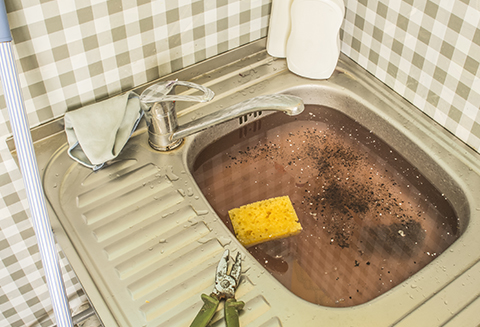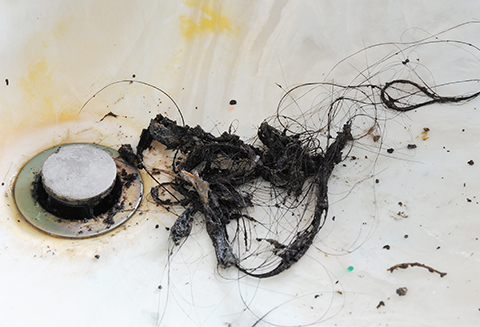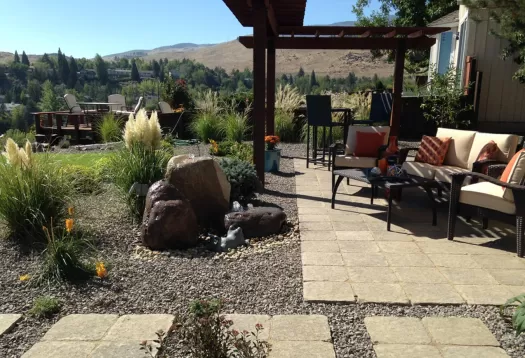Whether you rent or own your home, it pays to take care of your pipes and stick to a regular maintenance schedule. Not only will you avoid the hassle of a back-up or leak, you could save yourself the expense of a busted pipe and water damage.
Hey, we understand it’s easy to take pipes for granted – you turn the faucet and they deliver water. It’s when your pipes stop working correctly that they really get your attention. Clogs, leaks, low pressure – pipe problems are, at the least, inconvenient and, at most, quite costly. So, leave it to your pals at Home Is Possible to come up with some strategies for keeping everything flowing nice and smooth.
Top tips to stop clogs before they start 
If we only had a few words of advice to share on pipes, they might be: “Keep junk out of your sinks.” (Conveniently we have, like a thousand words to share!) Clogged pipes and drains are not only a nuisance, they shorten the lifespan of your plumbing by adding pressure and stress. Luckily, you can avoid the majority of clogs with these common-sense steps:
For all pipes:
- Don’t put grease, oil (including bath oils) or fats down the drain. They build up inside pipes, merge with other waste material and create water dams (water dams ≠ good).
- Stay away from using store-bought chemical drain openers regularly. While the occasional use of these products can be handy for removing clogs, their harsh chemicals corrode pipes over time and can do long-term damage – not to mention the toxic fumes. There are less harmful ways to open up your pipes (see Three ways to safely clear a drain below).
YOU MAY ALSO LIKE: Is A Home Warranty Your Thing?
For kitchen pipes:
- If you have a disposal, turn it and your water on before putting food down the drain.
- Never put fibrous, hard or stringy food wastes down the disposal – these include banana peels, celery, fruit pits, bones and potato peels.
- Allow cold water to run for at least 15 seconds after using the disposal to ensure food wastes are flushed down the main line.
- Run your dishwasher at night to conserve hot water and maintain good water pressure throughout the day.
For bathroom pipes:
- Ideally, use screens over shower and sink drains to prevent hair from going down (see visual to the right if you wonder what happens when they accumulate down there).
- To quote that sign you’ve read a million times in stores and restaurants, “Please do not put sanitary items in toilet.” You may have thought this was because your bookstore is in a 1930s house with “sensitive” pipes. However, the fact is, trash NEVER belongs in a toilet – not sanitary napkins, tampons, tampon applicators, condoms nor cardboard toilet paper rolls. Not even many of the wipes and tampons labeled “flushable” should be flushed. Just put all that stuff in a trash bin. Your pipes will thank you.
- Wait about 10 minutes between showers to help maintain proper water pressure and hot water throughout the day. Maintaining proper water pressure helps prevent unwanted stress on your home plumbing system.
Four ways to safely clear a drain
Even if you’re super vigilant over your drains, clogs can happen. Try these methods for clearing clogs first, but if they don’t work, it’s time to call a plumber.
1. DIY drain opener
While many commercial drain openers are caustic and hard on pipes, you can make your own pipe-friendly clog opener with inexpensive ingredients from around your house like vinegar and baking soda.
2. Take the plunge
A simple way to unclog a plugged up sink is with a plunger – specifically a sink plunger, which has a smaller diameter than a toilet plunger. We’ve included a link to some easy-to-follow instructions for using a sink plunger.
If the plunger doesn’t clear your clog or speed up your slow draining issue, try #3.
3. Clean the P-trap
Many clogs and slow drains start with a clog at the curved pipe under the sink called the P-trap. To clean out the P-trap, you need to do some disassembly. It’s not hard, but you will need some tools and a little elbow grease.
If you discover the trap was not full of debris, and therefore not the cause of the clog, you just had a super fun plumbing exercise! But your problem isn’t fixed, so try #4.
4. Snake the pipe
Alternately called a plumbing snake, drain snake or drain auger, this tool is a coiled metal spiral with a handle on one end. You push the snake into the clog to break it up or grab the obstructing object with the auger head. Here are some easy to follow instructions.
If snaking doesn’t work, things are getting serious. Go ahead and call a plumber.
Stay regular – with your pipe maintenance
While you’re already working to avoid clogs (you read the first part of this blog, right?), there are other things you can do on a regular basis to maintain healthy pipes.
- Check for leaks. Look under your sinks for signs of moisture, such as pooling water, water marks and a musty smell.
- Test for slow drainage. If bubbles appear while water drains, it is usually a sign of a slow drain. All drains should have a full swirl while the water goes down. Any drains that are slow should be snaked.
- Check each faucet. Ensure water isn’t coming out of the handles or valves, replace washers or faulty hardware.
- Clean washing machine lint traps.
- Inspect toilet bowl and tank for leaks. Add a few drops of food coloring to the toilet tank. If you notice color in the toilet bowl within 30 minutes, you have a leak.
- Check the pressure. Constant high pressure can strain pipes. Normal water pressure ranges from 40 to 85 psi and can be measured with a hose bib gauge. If your pressure is significantly higher, hire a plumber to install a pressure reducer.
YOU MAY ALSO LIKE: Brrrrr-illiant Fall Pre-Freeze To-Dos
Winter pipe prep in five steps
Depending on where you live in the Silver State, winters can pose risks to exposed pipes. To keep them from cracking or bursting, take note of these five steps:
- Disconnect water hose from outdoor spigot
- Shut off the water valves for outdoor spigots — if you have them — and drain water from outdoor water lines
- Cover outdoor spigots with a Styrofoam insulation cover
- Insulate pipes in unheated areas, such as garage and crawl spaces
- For very vulnerable pipes, allow water to trickle from faucet when temperatures are extremely low
While it may seem like a lot of work for something you don’t even see 99% of the time, maintaining pipes is actually pretty simple and WAY better than cleaning up after a backed-up toilet or overflowing sink. Take our word for it.
If you’re looking for a home of your own with its very own pipes you can care for, we can help with that too. Get started by finding a HIP-qualified lender and real estate professional who can help you get the most bang for your homebuying buck.


